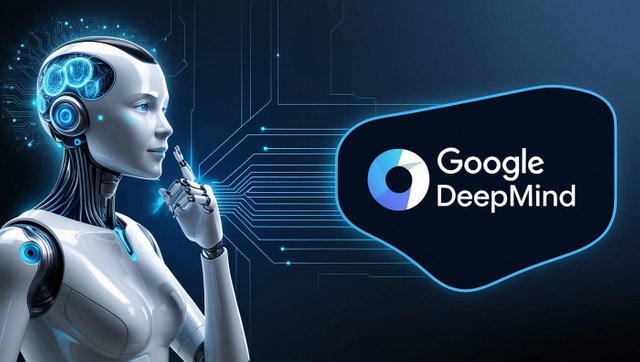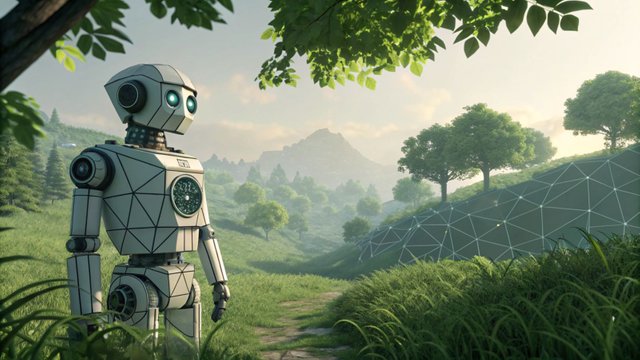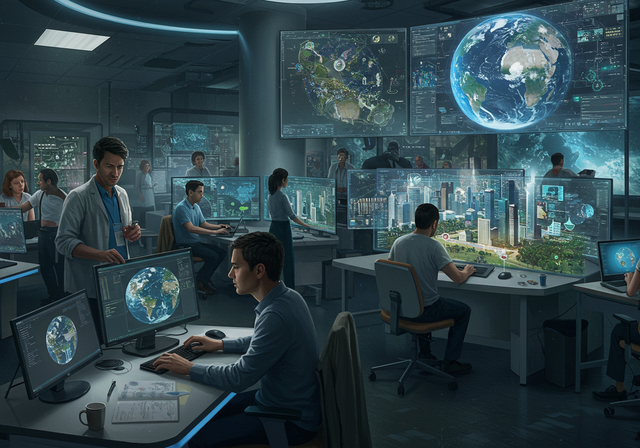Simulating the physical world with Google Deepmind/Simulación del mundo físico con Google Deepmind

Source
Google DeepMind has already accustomed us to developing spectacular advances in artificial intelligence, whether it beats the world champion of Go, the Asian strategy game, or helps us decipher the folding of a protein based on the sequence of its genes, or its latest invention is capable of predicting the weather better than all existing climate models.
Google DeepMind ya nos tiene acostumbrados desarrollar espectaculares avances en inteligencia artificial, lo mismo machaca al campeón mundial de Go, el juego de estrategia asiático, que nos ayuda a descifrar el plegado de una proteína basándose en la secuencia de sus genes o, su último invento capaz de predecir el tiempo atmosférico mejor que todos los modelos climáticos existentes.
But their latest development exceeds all my expectations: it is the simulation of worlds with DeepMind, a fascinating concept that is revolutionizing artificial intelligence. When we say worlds, we do not mean environments that perfectly imitate a forest, for example, but a world in which the leaves of the trees grow and fall in autumn in response to the parameters of the simulation.
Pero su último desarrollo supera todas mis expectativas, se trata de la simulación de mundos con DeepMind, un concepto fascinante que está revolucionando la inteligencia artificial. Cuando decimos mundos no nos referimos a entornos que imitan a la perfección un bosque por ejemplo, sino a un mundo en el que las hojas de los árboles crecen y se caen en otoño respondiendo a los parámetros de la simulación.

Source
DeepMind has developed simulations to train artificial intelligence agents in virtual environments, a 3D simulation platform where AI-based models can be used to simulate physical systems, such as fluids, materials and natural environments. For example, the Graph Networks for Physical Simulation project made it possible to simulate how particles and objects interact in a dynamic environment.
DeepMind ha desarrollado simulaciones para entrenar agentes de inteligencia artificial en ambientes virtuales, una plataforma de simulación en 3D donde utilizar modelos basados en IA para simular sistemas físicos, como fluidos, materiales y entornos naturales. Por ejemplo, el proyecto Graph Networks for Physical Simulation permitió simular cómo interactúan partículas y objetos en un entorno dinámico.
In areas such as biology and medicine, virtual models could be created to simulate the spread of infectious diseases, such as COVID-19, and to evaluate the effectiveness of different interventions, such as vaccines or social distancing measures, before touching the taxpayer's balls, or the behavior of proteins and molecules could be simulated at the atomic level, to study the causes of diseases and develop new therapies.
En áreas como la biología y la medicina, se podrían crear modelos virtuales para simular la propagación de enfermedades infecciosas, como el COVID-19 y evaluar la eficacia de diferentes intervenciones, como vacunas o medidas de distanciamiento social, antes de tocar las pelotas al contribuyente o se podría simular el comportamiento de proteínas y moléculas a nivel atómico, para estudiar las causas de enfermedades y desarrollar nuevas terapias.

Source
For drug development, millions of virtual molecules can be generated and their therapeutic potential evaluated, accelerating the drug discovery process. Detailed models of organs and tissues can be created to study their function under normal and pathological conditions and new treatments can be tested on these virtual models before conducting clinical trials in humans.
Para el desarrollo de fármacos se pueden generar millones de moléculas virtuales y evaluar su potencial terapéutico, acelerando el proceso de descubrimiento de nuevos fármacos. Se pueden crear modelos detallados de órganos y tejidos para estudiar su funcionamiento en condiciones normales y patológicas y probar nuevos tratamientos en estos modelos virtuales antes de realizar ensayos clínicos en humanos.
To train autonomous vehicles, they will not only be able to simulate buildings, pedestrians and other vehicles, but they will also feel the centrifugal force on curves and the tires will soften with the heat of the asphalt.
But above all this smells like the beginning of starting to build a whole simulated universe and then, who guarantees us that it is the first and that our world is not already a simulation.
Para entrenar vehículos autónomos, no solo podrán simular los edificios, peatones y otros vehículos sino que además sentirán la fuerza centrífuga en las curvas y los neumáticos se reblandeceran con el calor del asfalto.
Pero sobre todo esto huele al comienzo de empezar a construir todo un universo simulado y entonces, quien nos garantiza que es el primero y que nuestro mundo no sea ya una simulación.
More information/Más información
https://techcrunch.com/2025/01/06/google-is-forming-a-new-team-to-build-ai-that-can-simulate-the-physical-world/
Hi, @mauromar,
Your post has been manually curated!